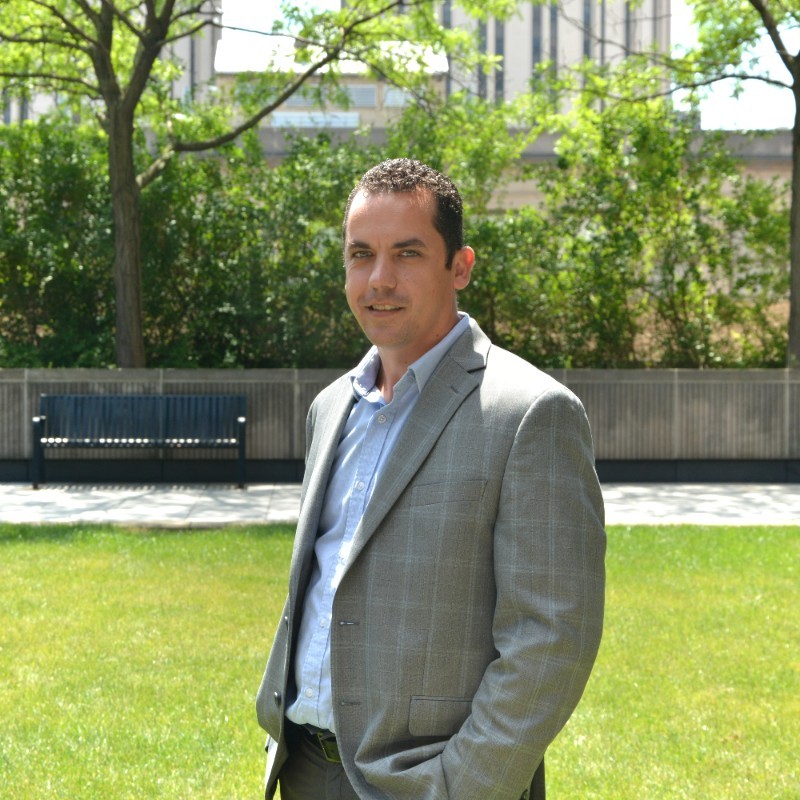Enabling Soft Magnetic Materials and Technology for Wide (WBG) and Ultra-Wide Bandgap (UWBG) Power Electronics
Abstract: Numerous trends are driving the need for advances in electrical power conversion technologies, including rapid deployment of renewables in the electric power grid and electrification of the transportation sector. Soft magnetics technologies play a critical role as an enabler for state-of-art power electronics conversion topologies and systems able to fully exploit the latest advances in wide bandgap (WBG) and ultrawide bandgap (UWBG) semiconductor-based switching devices. Current commercial soft magnetic materials and manufacturing solutions are not optimized for these new application requirements. Amorphous and nanocrystalline soft magnetic alloys have emerged as the premier solution for many WBG-based power electronics converter applications, including medium frequency transformers and inductors, as a result of increased saturation flux densities relative to ferrites and reduced eddy current losses compared to electrical steels. Historically, brittle mechanical properties of nanocrystalline alloys have limited their application in WBG power electronics conversion. In case of future UWBG power electronics, alternative soft magnetic materials systems and manufacturing pathways are required for the unprecedented combinations of power, voltage, and switching frequencies. This presentation will provide an overview of needs and examples of future engineering design pathways being pursued. Specifically, we will discuss (1) emerging nanocrystalline alloys with improved magnetic properties and enhanced ductility combined with advanced manufacturing methods for WBG power electronics and (2) new ideas in ferrite based soft magnetic materials for future UWBG power electronics. An overview of some relevant commercialization efforts as it relates to amorphous and nanocrystalline soft magnetics technology will also be discussed. Broader needs for workforce development in advanced magnetic materials and devices for power applications will also be addressed.
Date and Time
Location
Hosts
Registration
-
 Add Event to Calendar
Add Event to Calendar
- 401 W Main Street, Mechanical and Nuclear Engineer
- Richmond, Virginia
- United States 23284
- Building: East Engineering Building
- Room Number: E3229
- Click here for Map
- Contact Event Host
- Co-sponsored by Virginia Commonwealth University, Department of Mechanical and Nuclear Engineering
Speakers
 Paul of University of Pittsburgh
Paul of University of Pittsburgh
Enabling Soft Magnetic Materials and Technology for Wide (WBG) and Ultra-Wide Bandgap (UWBG) Power Electronics
Abstract: Numerous trends are driving the need for advances in electrical power conversion technologies, including rapid deployment of renewables in the electric power grid and electrification of the transportation sector. Soft magnetics technologies play a critical role as an enabler for state-of-art power electronics conversion topologies and systems able to fully exploit the latest advances in wide bandgap (WBG) and ultrawide bandgap (UWBG) semiconductor-based switching devices. Current commercial soft magnetic materials and manufacturing solutions are not optimized for these new application requirements. Amorphous and nanocrystalline soft magnetic alloys have emerged as the premier solution for many WBG-based power electronics converter applications, including medium frequency transformers and inductors, as a result of increased saturation flux densities relative to ferrites and reduced eddy current losses compared to electrical steels. Historically, brittle mechanical properties of nanocrystalline alloys have limited their application in WBG power electronics conversion. In case of future UWBG power electronics, alternative soft magnetic materials systems and manufacturing pathways are required for the unprecedented combinations of power, voltage, and switching frequencies. This presentation will provide an overview of needs and examples of future engineering design pathways being pursued. Specifically, we will discuss (1) emerging nanocrystalline alloys with improved magnetic properties and enhanced ductility combined with advanced manufacturing methods for WBG power electronics and (2) new ideas in ferrite based soft magnetic materials for future UWBG power electronics. An overview of some relevant commercialization efforts as it relates to amorphous and nanocrystalline soft magnetics technology will also be discussed. Broader needs for workforce development in advanced magnetic materials and devices for power applications will also be addressed.
Biography:
Paul R. Ohodnicki Jr. is currently RK Mellon Faculty Fellow in Energy at the University of Pittsburgh and the Engineering Science program director. He is also the founding director of the Advanced Magnetics for Power and Energy Development (AMPED) consortium, a university – industry–government collaborative partnership focused on educating the next generation workforce at the intersection between new soft magnetic materials, device applications, and system level for renewable integration and vehicle electrification. In addition, he serves as the Chief Technology Officer and co-founder of CorePower Magnetics, an early-stage startup seeking to commercialize a portfolio of intellectual property developed during his time as an employee at the US Department of Energy. Prior to his current roles, he was a materials scientist and technical portfolio lead in the Functional Materials Team of the Materials Engineering & Manufacturing Directorate of the National Energy Technology Laboratory. He graduated from the University of Pittsburgh in 2005 with a B.Phil. in engineering physics and a B.A. in economics and subsequently earned his M.S. (2006) and Ph.D. (2008) in materials science and engineering from Carnegie Mellon University. Ohodnicki has published more than 150 technical publications and holds more than 15 patents, with more than 30 additional patents under review. He also is the recipient of a number of awards and recognitions, including the Federal Employee Rookie of the Year Award (2012), Presidential Early Career Award in Science and Engineering (2016), and the Advanced Manufacturing and Materials Innovation Category Award for the Carnegie Science Center (2012, 2017, 2019). In 2017, he was a nominee for the Samuel J. Heyman service to America Medal.
Email:
Address:Virginia, United States

